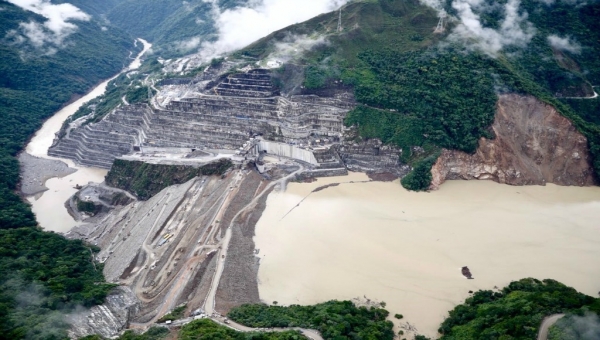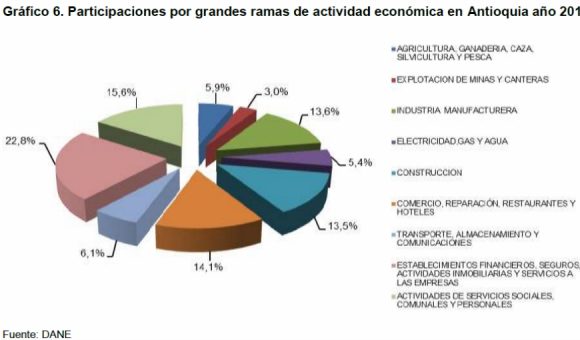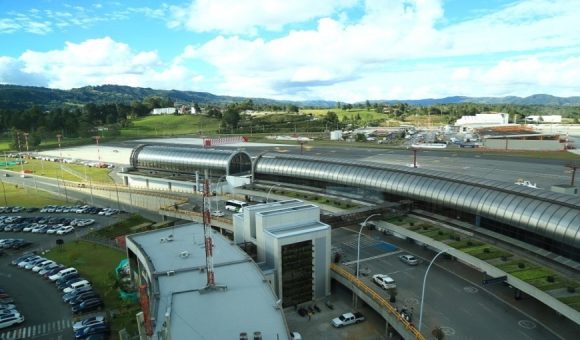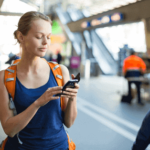Update: Hidroituango Construction Restarts Following Suspension; EPM, XM Publish Worst-Case Scenarios

The threat of possible landslides originating in the mountain above EPM’s under-construction, 2.4-gigawatt “Hidroituango” hydroelectric dam in Antioquia had triggered a temporary suspension and evacuation of workers May 29, pending further technical analysis.
However, in a 4 p.m. Wednesday, May 30 press conference, EPM announced that further technical analysis revealed no further movement in the mountain, hence enabling restart of construction work.
Then, in a follow-up press conference on Thursday, May 31, EPM general manager Jorge Londoño de la Cuesta added that a relatively moderate landslide of about 130,000 cubic meters from the mountain adjacent to the dam eventually is likely to fall near the entrance of engineered gates designed to conduct river water to the mechanical room (where the electricity turbines are to be located).
However, if and when this expected landslide happens, significant damage to the dam works isn’t now seen very likely. Nor is a massive collapse of the mountain adjacent to the dam seen likely — a collapse that possibly could block the spillway or perhaps cause a huge wave that could overtop the dam, according to international and local experts evaluating the situation.
With the engineered spillway work nearly complete (likely by June 3), and the planned closing of an access tunnel near the spillway due for completion by around June 5, the last crucial step is raising dam height to 415 meters above sea level (probably by June 7), from 410 meters currently. Those three steps likely ensure that no catastrophic failure of the dam will occur — and also enable resumption of crucial tunnel works.
Permanent closing of the main diversion tunnel — damaged and blocked by Cauca River flooding following unusually heavy rains in April and May — is likely to take another two months, Londoño de la Cuesta explained. Meanwhile, closure, cleaning and evacuation of waters from the mechanical room — temporarily used to divert Cauca waters because of damage to the main diversion tunnel — likely will require several more months of work, followed by inspection and repairs to the mechanical room, requiring additional time, he added.
In the original May 29 announcement explaining the temporary halt to construction, EPM had announced: “A movement was detected in the upper part of the mountain, in the same place where on Saturday, May 26, a landslide occurred. As a preventive measure and for safety, 1,500 workers were evacuated who were carrying out works on the dam and landfill. In the operation, no-one was hurt and all employees were relocated to a safe place.
“When the geotechnical conditions stabilize, work will continue.
“In this [geological] massif, which in recent days prompted preventive evacuations for the safety of those who work in that area of the project, permanent monitoring with geologists and high technology is maintained.
“As a result of the monitoring, a [potential landslide] was anticipated and evacuation of the personnel in the field was ordered. Indications are that in the next hours or days there could be new landslides.
“With expert personnel, the company performs permanent geological monitoring with piezometers to measure the pressure of the water, [and EPM also employs] radar, satellite monitoring and laser beams in the [Cauca River water diversion] tunnels to determine the condition of the works.
“Additionally, with surface control points on the mountain, combined with radar, we can detect sensitivities of up to tenths of millimeters that allow us to warn of any eventuality,” according to the company.
Possible Economic Consequences
If some future landslide were to cause significant physical and economic damage to the project, then EPM is prepared to respond with possible asset sales, the company added.
For example, the company potentially could sell various power works in Colombia and in other countries, valued at some COP$3 trillion (US$1.04 billion), according to EPM.
“EPM as of today has cash at the Group level of COP$1.4 trillion [US$484 million} and credit lines approved and not disbursed for US$1.3 billion,” according to the company.
So far in 2018, EPM has generated revenues of COP$5.1 trillion (US$1.76 billion), earnings before interest, taxes, depreciation and amortization (EBITDA) of COP$1.7 trillion (US$588 million) and profits of COP$950 billion (US$329 million), the latter up 21% year-on-year.
In total, EPM’s investments in power and other subsidiaries amount to COP$9.3 trillion (US$3.2 billion), according to the company.
XM National Power-Grid Analysis
On a related front, Medellin-based wholesale power-grid administrator XM on May 29 published results of a nationwide scenario-analysis arising from possible delays to the Hidtroituango project.
“In the short and medium term [one to three years], there are no risks in attention to energy demand of the Sistema Interconectada Nacional [SIN, the Colombian national power grid] and there could be greater thermal power-plant generation requirements,” XM concluded.
However, “in the long term, and in the presence of critical hydrological conditions, there could be insufficiency in the supply of electricity,” XM warned.
“Hidroituango is an indispensable project to meet the energy demand in the country economically, safely and reliably,” the company added.
As for medium-term impacts (two to three years), “modeling considered scenarios of low hydrology and the non-entry of Hidroituango on the planned [start-up] dates — the first unit [300 megawatts] in December 2018 and the fourth and last in August 2019 [totaling 2.4-gigawatts].
“These analyses indicate that the SIN would have the necessary resources to meet the demand and could [provoke] constant thermal generation requirements in some periods exceeding 70 gigawatt-hours (GWh) per day,” according to XM.
For “long-term” impacts (more than three years), “in the case of critical hydrological scenarios, it can be seen that from the year 2022 there could be moments in which the [power-supply] reliability indicators established by the current regulations are not met — that is, periods with a deficit between supply and demand of electricity in the SIN,” according to XM .
“Based on the information we have to date, and with the imminent postponement of the entry into production of Hidroituango, no risks are foreseen in the SIN in the short and medium term; but, a greater contribution of thermal generation could be required,” added XM general manager María Nohemi Arboleda.
“As of 2022, the projections identify periods in which there could be insufficiency in the supply of electricity,” she continued. “Our analyses ratify the importance of Hidroituango — which is why, in view of its delay, it will be necessary to have a greater contribution from the existing power generators, and it is vital to encourage the entry of new generation projects with short construction times, as well as distributed generation in the SIN, as well as demand-response mechanisms.
“We consider very relevant the recent proposal of resolutions issued by the CREG [Colombia’s national power-and-gas regulatory agency] to ensure firm energy to meet the demand of electricity in the medium and long term,” she concluded.
















